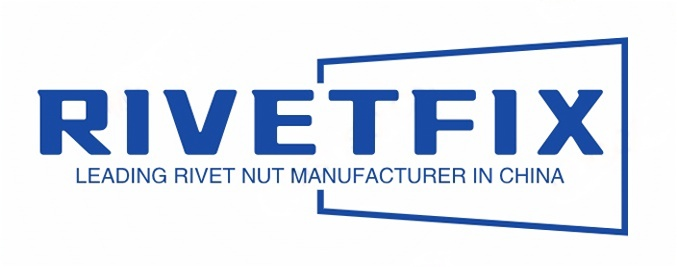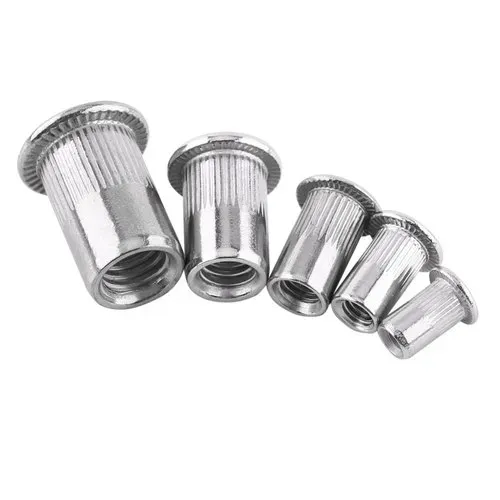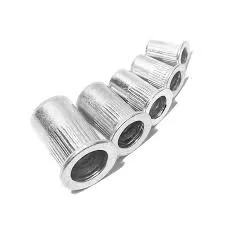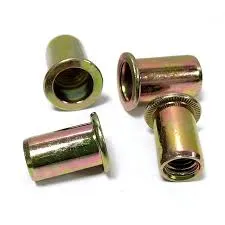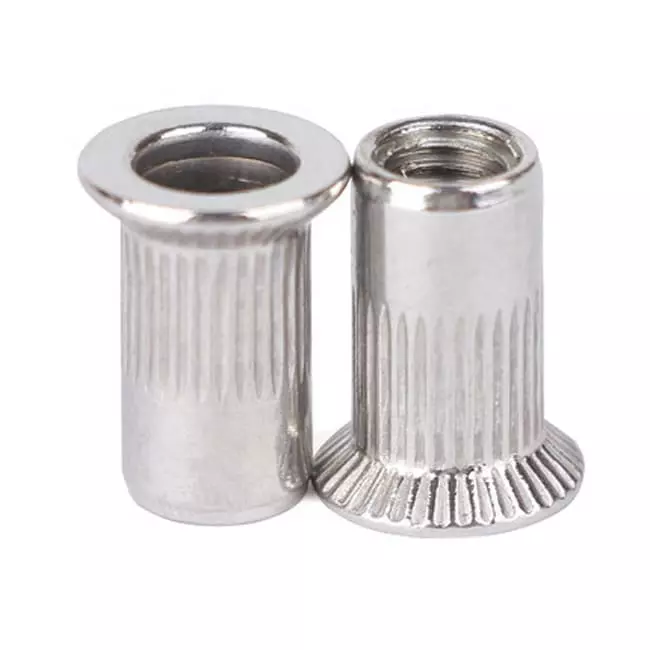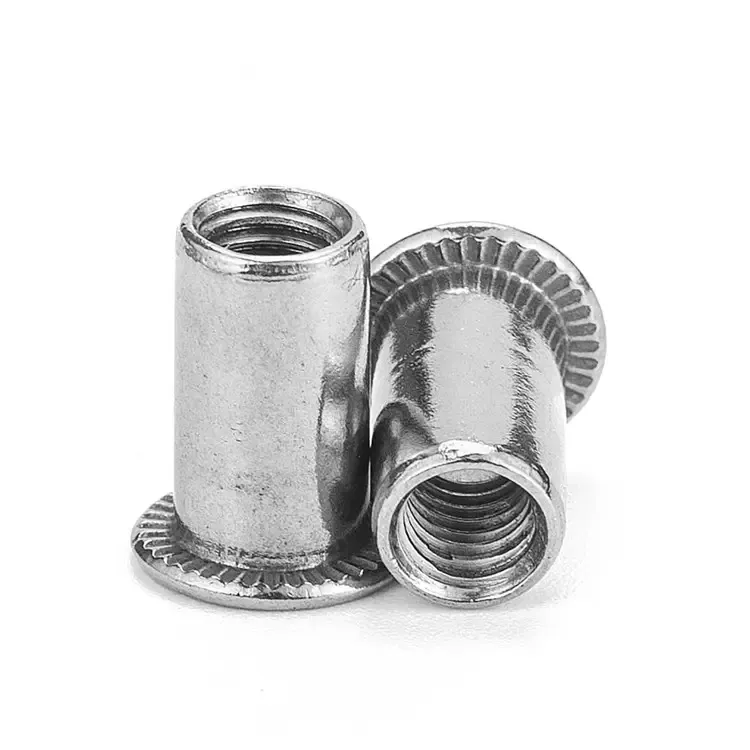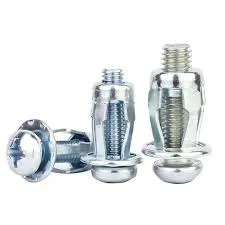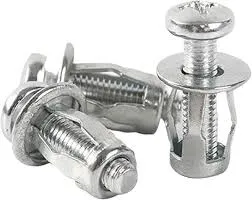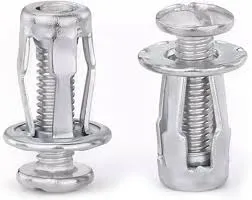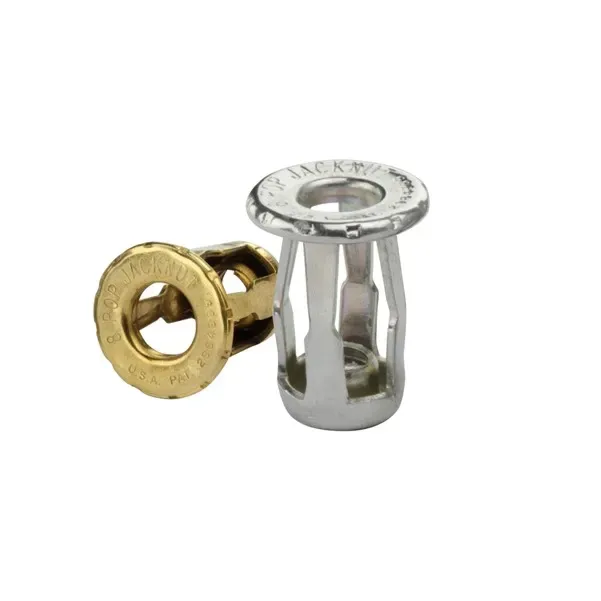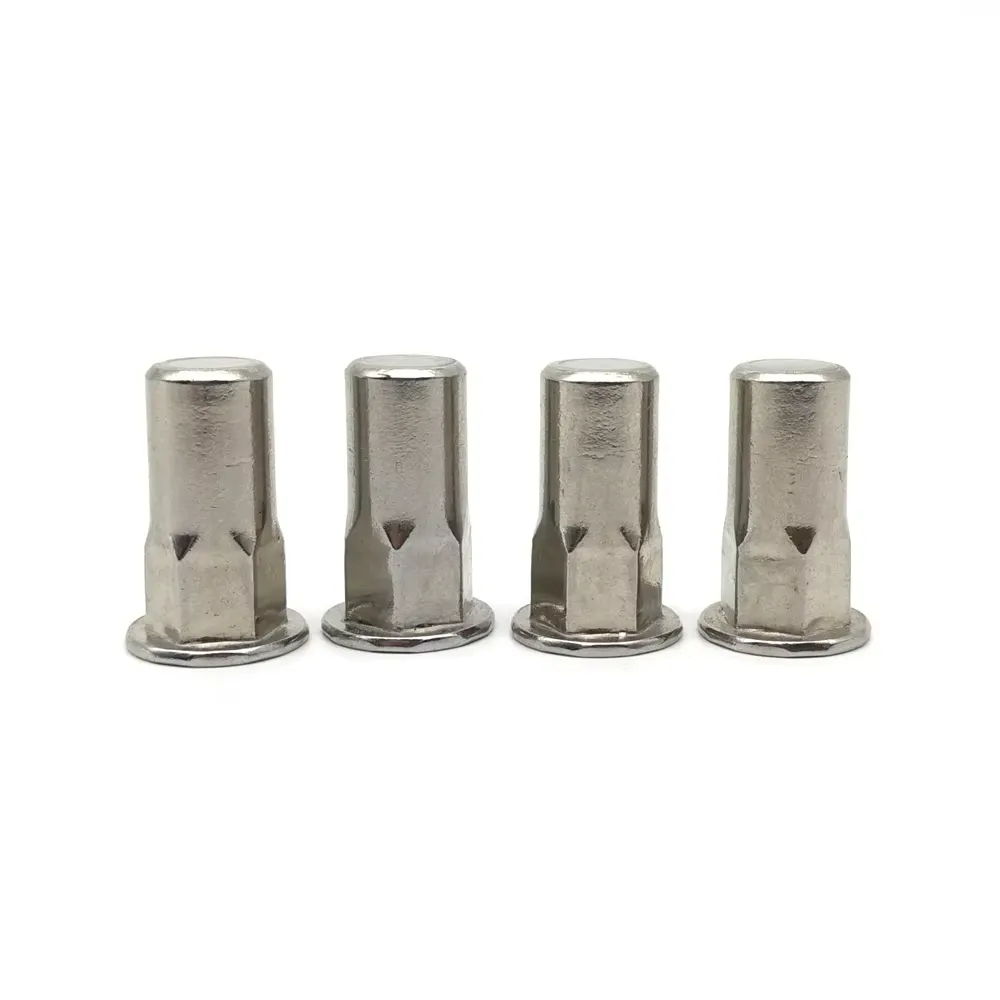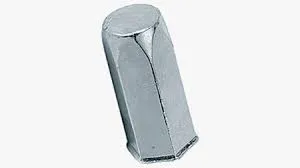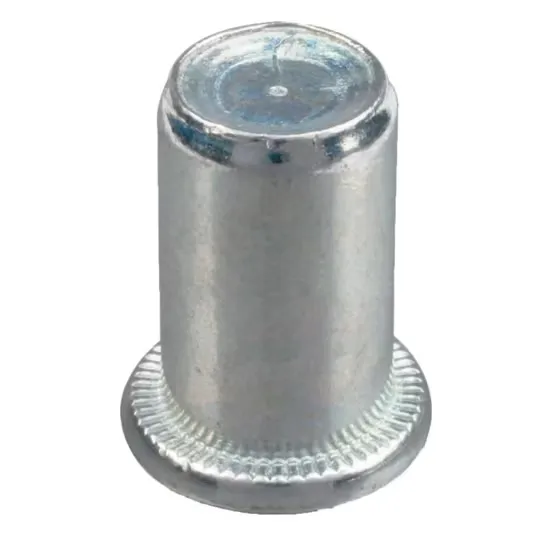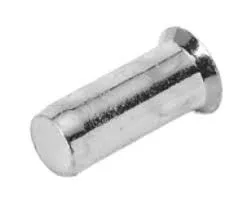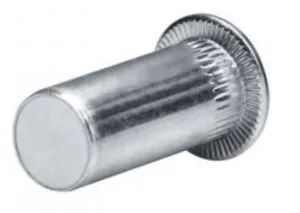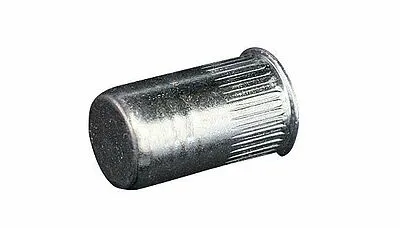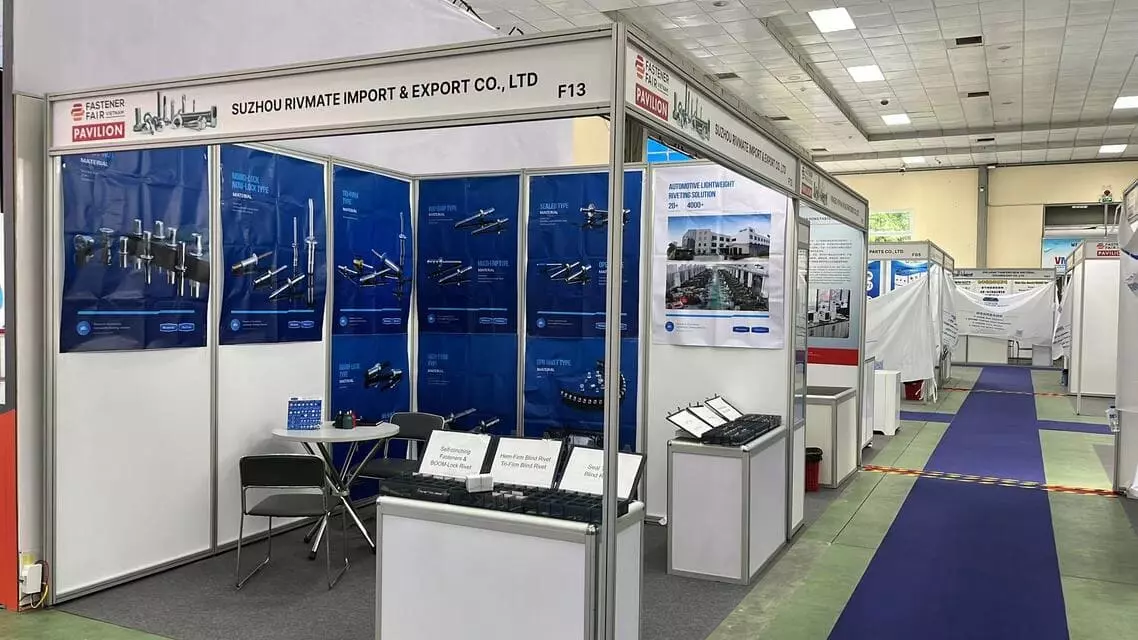Home » Pop Rivet Nuts
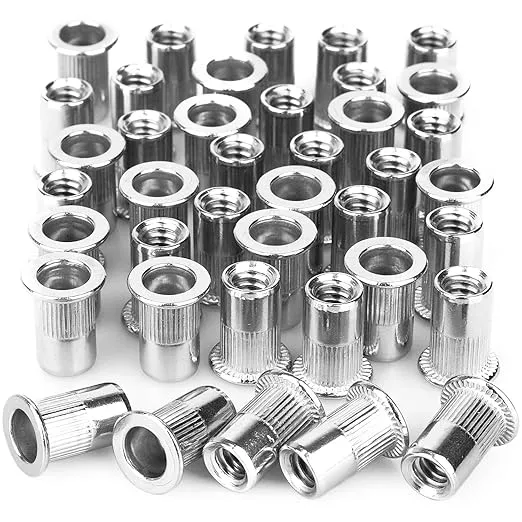
Pop Rivet Nuts
Pop rivet nuts are versatile threaded inserts designed for creating strong, load-bearing threads in thin or soft materials where traditional tapping or welding is not possible. These fasteners are installed from one side of the workpiece, making them ideal for closed sections, tubing, or assemblies with limited access. Pop rivet nuts come in various styles and materials, offering excellent vibration resistance and pull-out strength. Whether you’re working with metal, plastic, or composite surfaces, they ensure secure and permanent threaded connections.
Upgrade your fastening solutions with pop rivet nuts—perfect for automotive, aerospace, industrial, and DIY applications. Choose the right rivet nut today for reliable performance and simplified installation!
Related Products
Get a Free Quote Now!

custom rivet and rivet nut manufacturer
5 8 Rivet Nut
Expanding Rivet Nut
Hexagonal Blind Rivet Nut
Stainless Steel Closed End Rivet Nut
Extra Long Rivet Nuts
Applications of Pop Rivet Nuts

Aerospace and Aviation
Ideal for lightweight and high-strength fastening in aircraft interiors, panels, and control systems, especially in areas with limited space or access.
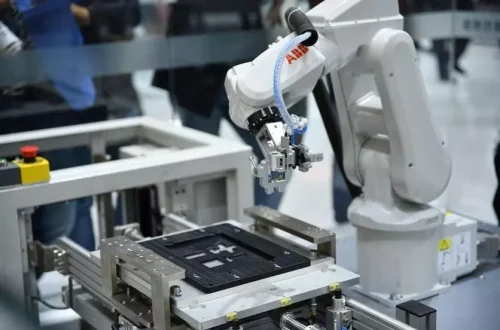
Electronics and Enclosures
Offer reliable internal threads in thin sheet metal or plastic housings for mounting circuit boards, fans, or connectors, ensuring durability and repeatable assembly.

Furniture and Cabinetry
Allow for quick installation of threaded inserts in MDF, plywood, and composite panels, enabling strong and clean joints without cracking or splitting the material.
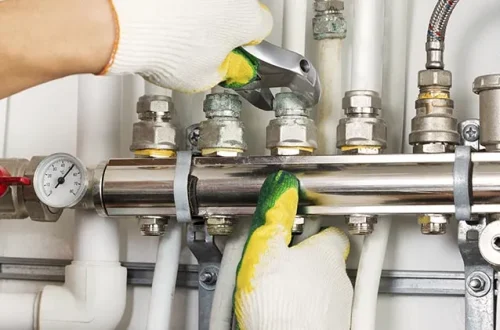
HVAC and Sheet Metal Work
Used to fasten ductwork, vents, and panels, pop rivet nuts provide strong, vibration-resistant threads in thin metal structures.

Home Appliances and Equipment
Provide durable threaded connections in washing machines, dryers, ovens, and other appliances where ease of maintenance and assembly is critical.

Marine and Outdoor Equipment
Stainless steel pop rivet nuts offer corrosion resistance, making them ideal for boats, docks, and harsh marine environments.
Related Articles
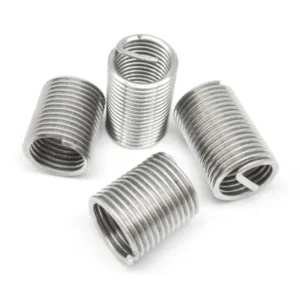
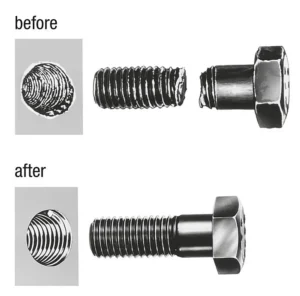
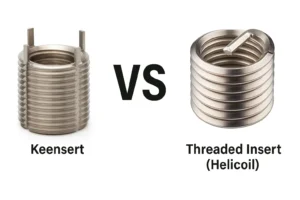
What Is the Difference Between Keensert and Threaded Insert?
What Is the Differen
FAQs About Pop Rivet Nuts
What is a Pop Rivet Nut and How Do They Work?
Pop rivet nuts are internally threaded fasteners that can be installed from one side of a workpiece. They are widely used in applications involving metal sheets, plastics, and composite materials—especially where tapping threads is impractical or rear-side access is limited. Pop rivet nuts offer a highly efficient, flexible, and reliable fastening solution across industries such as automotive, electronics, appliances, construction, and furniture.
a. Structure
The basic structure of a Pop rivet nut includes:
- Threaded Section: Provides a reusable internal thread for screws and bolts.
- Cylindrical Body: Fits into the pre-drilled hole in the workpiece.
- Deformation Zone: Designed to plastically deform during installation, forming a bulge or flange that locks the nut in place.
b. Working Principle
- Insert the Pop rivet nut into the pre-drilled hole (the hole diameter must match the rivet nut’s outer diameter).
- Attach the rivet nut to a special installation tool (manual or pneumatic) via its internal thread.
- Activate the tool—the mandrel pulls and expands the unthreaded end of the rivet nut, forming a bulge behind the panel.
- The rivet nut is clamped securely in place as the mandrel automatically breaks off or is manually removed.
- The result is a strong, threaded anchor point that allows screws to be installed and removed repeatedly.
c. Advantages
- One-side installation, ideal for inaccessible or enclosed structures.
- Fast installation, with no welding or tapping required.
- Immediate strong thread after installation.
- Compatible with various materials, including metal, plastic, and composites.
- Available in multiple sizes, materials, and head types, meeting different strength and corrosion resistance requirements.
The Pros and Cons of Pop Rivnuts
a. Pros
1. Blind-Side Installation for Hard-to-Reach Areas
The biggest advantage of Pop rivet nuts is their ability to be installed from one side of the workpiece, making them ideal for tubing, box structures, and sheet metal where rear access is not possible.
2. Quick and Efficient Installation
No welding or tapping is required—just drill a hole and use a rivet nut tool to install. This greatly simplifies the assembly process and improves production efficiency.
3. Strong Threaded Connection
Even in thin-wall materials, Pop rivet nuts provide a secure and durable internal thread, supporting repeated screw installation and removal—ideal for structural fastening.
4. Compatible with a Wide Range of Materials
Can be used on various base materials including aluminum, stainless steel, low carbon steel, plastics, and composites, offering strong material compatibility.
5. Multiple Sizes and Head Styles Available
Available in various sizes, head types (e.g., flat head, countersunk), and materials (aluminum, steel, stainless steel) to meet different strength and corrosion resistance needs.
6. Suitable for Automated Installation
With compatible automation equipment, Pop rivet nuts support mass production and are ideal for industrial manufacturing environments.
b. Cons
1. Requires High Hole Precision
To ensure proper grip and anti-rotation performance, the installation hole must be drilled within a tight tolerance, increasing the difficulty of pre-processing.
2. Limited Shear Strength
As they are primarily used in thin materials, Pop rivet nuts offer lower shear strength compared to weld nuts or solid studs, making them unsuitable for very high-load applications.
3. Requires Specialized Installation Tools
Installation must be done using a manual or pneumatic rivet nut tool, which requires initial equipment investment. Improper use may lead to deformation or installation failure.
4. Prone to Loosening in Soft Materials
On soft surfaces like plastic or softwood, lack of surface rigidity may cause the rivet nut to spin or pull out under long-term stress or vibration. Support washers or reinforcement are recommended.
Summary
| Pros | Cons |
| Blind-side installation for limited access areas | Requires high hole precision |
| Fast installation, boosts productivity | Limited shear strength, not for high-load |
| Provides strong threaded connection | Needs specialized tools |
| Compatible with various materials | May loosen or pull out in soft materials |
| Wide range of sizes and materials | – |
| Supports automated installation | – |
Pop Rivet Nut vs. Pop Rivet: Which One is Best for You?
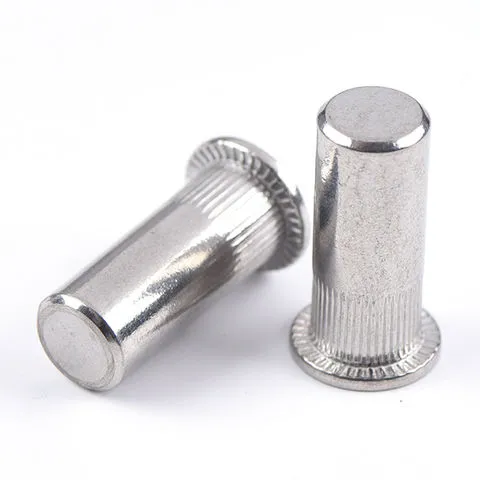
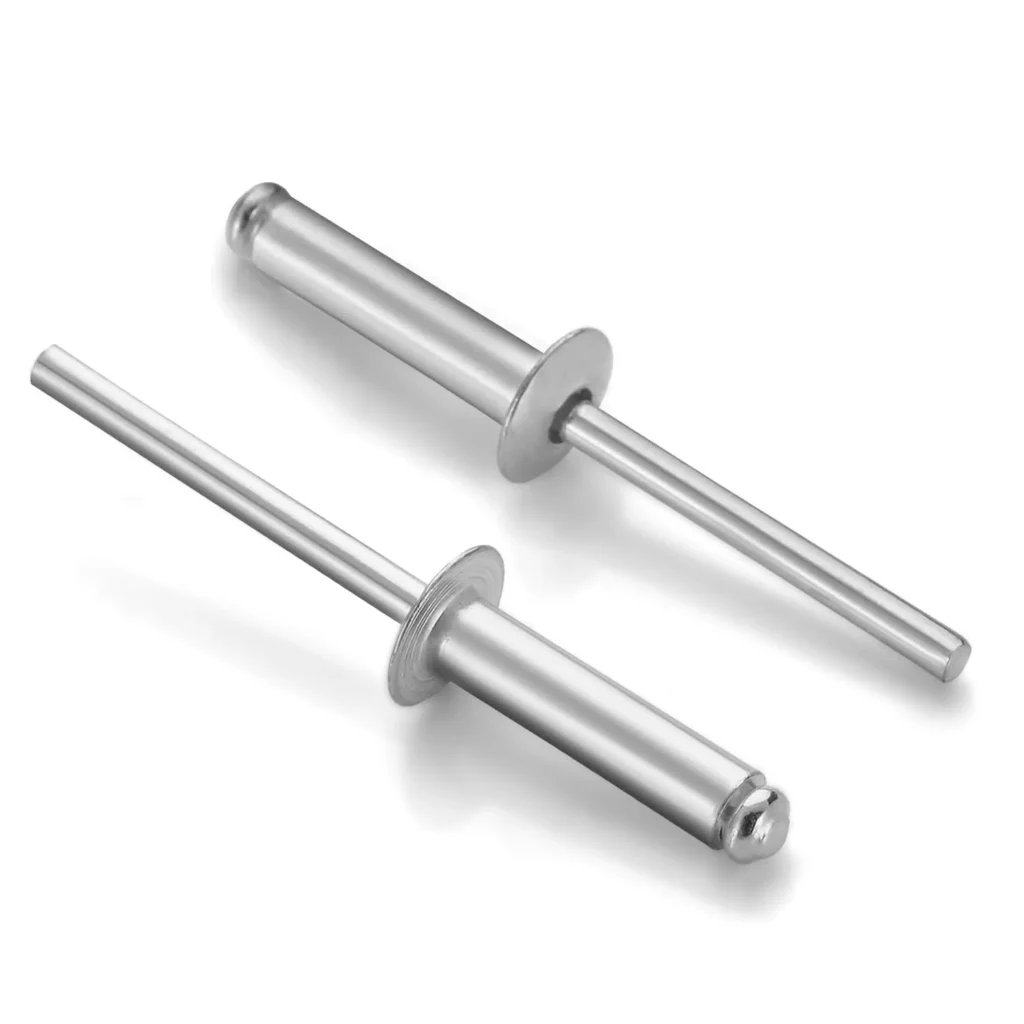
a. Structural and Functional Differences
Pop Rivet Nut (Rivet Nut):
A blind fastener with internal threads designed for applications where the back side of the workpiece is inaccessible. Once installed, it allows screws to be repeatedly assembled and removed, making it ideal for structures that require maintenance or part replacement.
Pop Rivet (Blind Rivet):
A one-time-use fastener used to permanently join two or more materials together. Once installed, it cannot be removed without destroying the joint, making it suitable for non-serviceable, permanent connections.
b. Application Scenarios
- Pop Rivet Nut:
- When a threaded hole is needed on sheet metal or tubing
- For assemblies requiring disassembly or maintenance
- Compatible with metal, plastic, composite materials, etc.
- Ideal for blind-hole environments where rear access is not possible
- Pop Rivet:
- To fasten two materials without requiring threads
- For structures not intended to be disassembled
- Suitable for lightweight, permanent connections
- Lower cost and faster installation
c. Comparison of Pros and Cons
| Feature | Pop Rivet Nut | Pop Rivet |
| Removable | Yes | No |
| Internal Thread | Yes | No |
| Reusable After Installation | Yes | No |
| Installation Tool | Special rivet nut gun | Standard rivet gun |
| Suitable for Blind Holes | Yes | Yes |
| Installation Complexity | Moderate | Low |
| Cost | Higher | Lower |
What Size Drill Bit Should I Use to Drill the Hole for My Rivet Nut?
a. Why Is Drill Hole Size Important?
Selecting the proper drill bit size before installing a rivet nut is crucial—it directly affects the fastening strength and installation quality. If the hole is too small, the rivet nut may not fit or could deform during installation. If the hole is too large, the rivet nut may become loose inside the hole, reducing holding strength or even leading to failure.
b. How to Determine the Correct Drill Bit Size?
Based on Thread Size:
Different rivet nut sizes (e.g., M6, M8, 1/4-20, 3/8-16) require corresponding hole diameters. Rivet nut suppliers typically provide a recommended hole size chart.
Consider Grip Range and Material:
Different head types (flat head, countersunk, multi-grip) and materials (steel, stainless steel, aluminum) can have slight variations in recommended hole tolerances. Always refer to the technical datasheet from the manufacturer.
Recommended Hole Size Chart (Examples):
| Thread Size | Recommended Hole Diameter (mm) | Recommended Drill Bit (Inches) |
| M4 | 6.0 – 6.1 mm | 15/64″ |
| M5 | 7.0 – 7.1 mm | 9/32″ |
| M6 | 9.0 – 9.1 mm | 23/64″ |
| M8 | 11.0 – 11.1 mm | 7/16″ |
| 1/4-20 (UNC) | 9.0 mm | 11/32″ or 23/64″ |
| 5/16-18 (UNC) | 10.5 – 11.0 mm | 13/32″ |
| 3/8-16 (UNC) | 13.0 mm | 17/32″ |
c. Recommendations
- Always perform a test fit before installation to ensure the rivet nut fits snugly without excessive force.
- For mass production, consider using stop-drill bits or custom drill jigs for consistent hole sizing.
- For softer materials, using a slightly smaller hole diameter can help improve the anchoring strength of the rivet nut.
